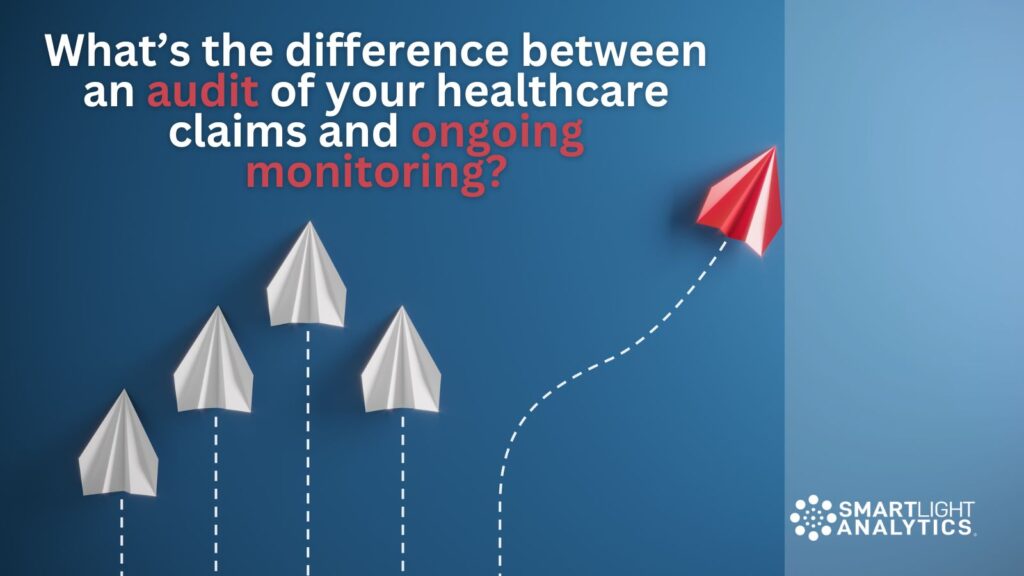The difference between an audit of your healthcare claims and ongoing monitoring
Large employers with self-funded healthcare insurance plans typically have post-payment audits of their healthcare claims as a part of Administrative Services Only (ASO) agreements. These audits seek to review claims for payment integrity. However, audits are generally done infrequently on a small sample size, just skimming the surface of the total number of claims. In comparison, ongoing monitoring offers employers a continual review of all claims. According to recent statistics, 65% of employers offering health insurance have self-insured plans1. In the U.S. today nearly all employers with 1,000 or more workers offer health insurance, which means monitoring spending on healthcare is an increasingly important task for employers and benefit managers.
In many ASO agreements, the annual audit outlined will take a small random sampling of 300 to 350 claims per year. That represents a tiny subset of claims and can limit what is revealed by the audit. This is especially true if the audit uses analytic models based on known issues within claims. Conversely, an ongoing monitoring approach digs deeper and can reveal more useful data for self-funded employers. Most significantly, ongoing monitoring analyzes 100% of claims data continually and is customized based on each employer’s population to look within the claims data for potential issues. This is important because employers need as much information and data as is available to make fiduciary decisions about their plans and to determine exactly how dollars are being spent.
To ensure optimal data insight, monitoring should include medical, pharmacy and dental claims monitoring, which provides a more complete picture of claims. When claims analysis combines both medical and pharmacy data it provides a thorough picture of what is happening for specific members and provides more tools to find waste that might exist. This combined 360-degree monitoring of claims allows for a more nuanced view of claims which can differentiate between a real overpayment or just a clinical anomaly representing a very sick patient. The overarching desire is to not create any disruptions for members or unnecessary referrals to carriers. The refinement of ongoing monitoring allows for that extra level of review and true findings.
The goal of both audits and ongoing monitoring is to get a picture of what is happening within claims. Ongoing monitoring by an independent party outside of the ASO allows for a more objective, clinical picture of claims activity and payments. This gives employers the opportunity to make better decisions based on real data identifying issues that are true overpayments. For most self-funded employers, the smaller sample size of periodic audits has a lower probability of finding issues whereas ongoing monitoring lets data lead the way. Mining all available data in a routine and detailed way means payment issues specific to individual company populations are more likely to be discovered.
The benefits of ongoing monitoring are clear. For employers seeking to meet fiduciary responsibilities and better control costs it does require action to implement such reviews and ensure their healthcare data is accessible.

SOURCES
-
- “Percentage of U.S. workers covered by self-funded health insurance plans from 1999 to 2022,” Statista



